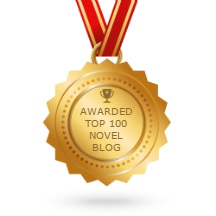 Join us today as we take a look behind the scenes of book publication! Ashley Casteel, Managing Editorial Assistant for Barbour Publishing, Inc., has generously shared her photos of various books during the editorial and printing process.
Join us today as we take a look behind the scenes of book publication! Ashley Casteel, Managing Editorial Assistant for Barbour Publishing, Inc., has generously shared her photos of various books during the editorial and printing process.
2) This is what an electronic proof (e-proof) looks like. The corrections are made using the track changes and commenting features in MS Word, and I scroll through the file to determine if each proofreading query and change is necessary and justifiable. (BTW—this is the e-proof version of Polly Dent Loses Grip, releasing February 2009)
3) This is a chart of traditional proofreading marks for hard copy proofs (taken from The Chicago Manual of Style). It’s basically a specialized shorthand that makes marking and interpreting manuscript corrections much more efficient.
6) This is how a cover appears in PDF format. Some covers, like this one, will have embossed or foiled overlay details on particular areas of the cover. Those details are expressed in the overlay cover (see pic #7).
9) These are manual proofreading marks on a paper galley. If there’s not marks on every page, pages with marks are indicated with little sticky flags to make the typesetting process more efficient.
11) Last of all, this is my heap of job envelopes. The ones in the rack are all those that are currently at proof or being reviewed by an author. The upright envelope contains a paper galley that needs sent to proof, and the stack on my desk are projects that are ready for a final review by a sponsoring editor, ready to send to send to the printer, or are typesetting corrections that I have yet to review.
















That's a nice view into the process.
ReplyDeleteVery interesting. Thanks for the tour.
ReplyDeleteI'm so glad you enjoyed Ashley's pictures and explanations of the editorial process. I remember as a new writer how curious I was about the journey a manuscript took to book-form.
ReplyDeleteNow's a good time to ask, are there any other behind-the-scenes glimpses of writing you all would like to see hosted here at NJ?
Happy Holidays!
I loved this post and all the pics. Thanks for doing this!
ReplyDelete